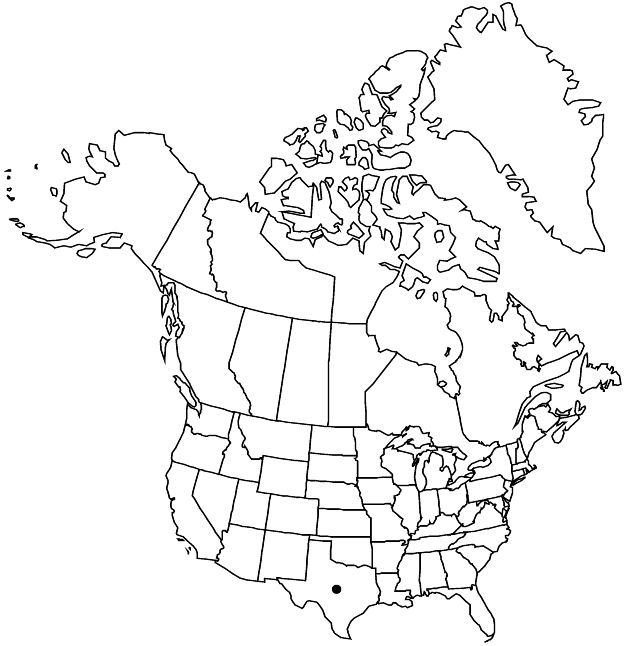Callirhoë scabriuscula
in A. Gray et al., Syn. Fl. N. Amer. 1(1,2): 302. 1897.
Plants perennial. Stems 1(–6), stiffly erect, 3.2–10 dm, densely hairy, hairs 6–8-rayed, stellate. Leaves: stipules persistent, linear-lanceolate, 5.8–8.5 mm; petiole 1.5–10 cm; blade suborbiculate, 3- or 5-lobed, 4–6.5 × 3.8–7 cm, surfaces stellate-hairy, lobes oblong to oblanceolate or linear-oblanceolate. Inflorescences racemose; involucellar bractlets (1–)3, linear, 5.5–10 × 0.7–1.5 mm. Flowers bisexual; calyx lobes valvate in bud, forming apiculate or acuminate point; petals reddish purple with deep-red basal spot, 3–3.7(–4) cm. Schizocarps 7.8–12 mm diam.; mericarps 12–20, 4.2–5 × 3.2–4 mm, hairy, indehiscent; beaks not prominent, 0.7–2 mm; collars absent. 2n = 30.
Phenology: Flowering spring.
Habitat: Quaternary (Holocene) wind-blown sand deposits
Elevation: 600 m
Discussion
Of conservation concern.
Callirhoë scabriuscula is found only in west-central Texas along the upper Colorado River where it has adapted to a rare edaphic niche, relict Quaternary sand dunes. Plants produce taproots up to one meter long. The U.S. Fish and Wildlife Service lists this species as endangered.
Callirhoë scabriuscula is in the Center for Plant Conservation’s National Collection of Endangered Plants.
